Related Research Articles
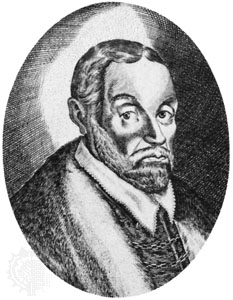
Giovanni Battista Guarini was an Italian poet, dramatist, and diplomat.

Giuseppe Gazzaniga was a member of the Neapolitan school of opera composers. He composed fifty-one operas and is considered to be one of the last Italian opera buffa composers.

Francesco Barbaro (1390–1454) was an Italian politician, diplomat, and humanist from Venice and a member of the patrician Barbaro family. He is interred in the Church of the Frari, Venice.

San Giovanni Ilarione is a comune (municipality) in the Province of Verona in the Italian region Veneto, located about 90 kilometres (56 mi) west of Venice and about 20 kilometres (12 mi) northeast of Verona.

Antonio Badile was an Italian painter from Verona.
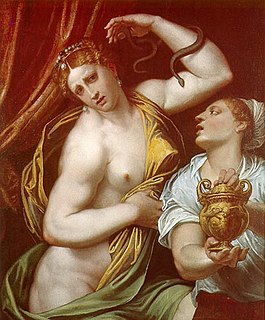
Domenico Riccio was an Italian painter in a Mannerist style from Verona, best known for frescos.

Battista Franco Veneziano also known by his correct name of Giovanni Battista Franco was an Italian Mannerist painter and printmaker in etching active in Rome, Urbino, and Venice in the mid 16th century. He is also known as il Semolei or just Battista Franco.
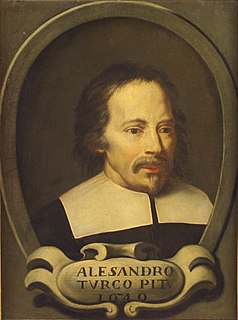
Alessandro Turchi was an Italian painter of the early Baroque, born and active mainly in Verona, and moving late in life to Rome. He also went by the name Alessandro Veronese or the nickname L'Orbetto. His style has been described as soft and Caravaggesque at the same time.

San Francesco della Vigna is a Roman Catholic church in the Sestiere of Castello in Venice, northern Italy.

Giovanni Battista Cimaroli (1687–1771) was an Italian painter of rustic landscapes with farms, villas and graceful figures and capricci of ruins and views of towns in the Veneto.

Catone in Utica is an opera libretto by Metastasio, that was originally written for Leonardo Vinci's 1727 opera. Following Vinci's success, Metastasio's text was used by numerous composers of the baroque and classical eras for their own operas, including Pietro Torri (1736), Antonio Vivaldi (1737), Giovanni Battista Ferrandini (1753) and J. C. Bach (1761).

Battista del Moro was an Italian painter of the Renaissance period active in his native Verona, as well as in Mantua and Venice.
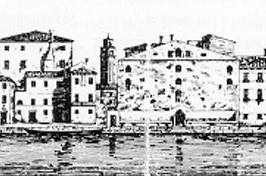
The Teatro San Angelo or Teatro Sant' Angelo was once a theatre in Venice which ran from 1677 until 1803.

Teatro San Samuele was an opera house and theatre located at the Rio del Duca, between Campo San Samuele and Campo Santo Stefano, in Venice. One of several important theatres built in that city by the Grimani family, the theatre opened in 1656 and operated continuously until a fire destroyed the theatre in 1747. A new structure was built and opened in 1748, but financial difficulties forced the theatre to close and be sold in 1770. The theatre remained active until 1807 when it was shut down by Napoleonic decree. It reopened in 1815 and was later acquired by impresario Giuseppe Camploy in 1819. In 1853 the theatre was renamed the Teatro Camploy. Upon Camploy's death in 1889, the theatre was bequeathed to the City of Verona. The Venice City Council in turn bought the theatre and demolished it in 1894.
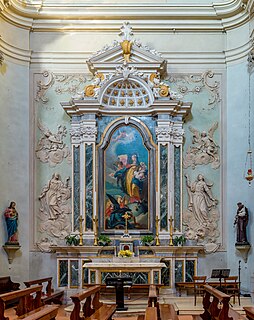
Francesco Lorenzi was an Italian painter of the late Baroque period.
Paolo Panelli was an Italian painter of the Late-Baroque, active in mainly in Verona.
Filippo Maccari was an Italian painter and scenic designer, mainly painting quadratura.
Giovanni Battista Lanceni or Giambattista Lanzani or Lanzeni was an Italian painter and engraver of the Baroque period active mainly in Verona.
Domenico Mancini is an Italian painter of the Venetian mainland, painting in a High Renaissance style. Mancini was either a pupil or a close follower of Giorgione and Giovanni Bellini. He was born in Treviso, and is said to have worked alongside Pietro Maria Pennacchi.
References
- ↑ Le vite dei pittori, scultori e architetti veronesi, by Diego Zannandreis, page 319-320.